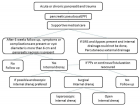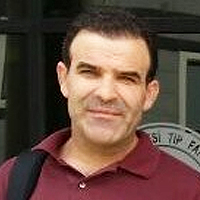Abstract
Review Article
Microarray Analysis of Fish Genomic Data for enhancing Aquaculture Productivity of India
Ajit Kumar Roy*
Published: 28 August, 2017 | Volume 1 - Issue 1 | Pages: 006-017
This review gives a brief introduction to the microarray technology and its experimental design and data analysis and a discussion of recent global progress in research using microarray technology in fish biology and aquaculture. DNA microarrays have been reported to have been used for the analysis of gene expression during various physiological, developmental or cellular processes in fish. During the recent past, investigators have begun to use microarrays on fish to address ecological, evolutionary and environmental questions including the variability of gene expression in natural populations, speciation, ecotype diversity, environmental remediation and host-pathogen interactions. The study suggests that a lot of gene expression studies have been conducted on salmon and zebrafish in Europe and USA. The same may be applied on Indian Major Carps and Catfishes to augment productivity from aquaculture sector.
Read Full Article HTML DOI: 10.29328/journal.hpbr.1001002 Cite this Article Read Full Article PDF
Keywords:
Microarray; Fish genome; Aquaculture; Indian major carps; Salmon; Zebrafish
References
- DeRisi J, Penland L, Brown PO, Bittner ML, Meltzer PS, et al. Use of a cDNA microarray to analyse gene expression patterns in human cancer. Nat Genet. 1996; 14: 457-460. Ref.: https://goo.gl/DQP4U2
- Schena M, Shalon D, Davis RW, Brown PO. Quantitative monitoring of gene expression patterns with a complementary DNA microarray. Science. 1995; 270: 467-470. Ref.: https://goo.gl/JiU8bG
- Duggan DJ, Bittner M, Chen Y, Meltzer P, Trent JM. Expression profiling using cDNA microarrays. Nat Genet. 1999; 21: 10-14. Ref.: https://goo.gl/oDXwCx
- Heller RA, Schena M, Chai A, Shalon D, Bedilion T, et al. Discovery and analysis of inflammatory disease-related genes using cDNA microarrays. Proc Natl Acad Sci USA. 1997; 94: 2150-2155. Ref.: https://goo.gl/wZxu5c
- Affymetrix GeneChip technology. An overview of how an Affimatrix GeneChip is made. Ref.: https://goo.gl/PBo4Ab
- Crowther DJ. Applications of microarrays in pharmaceutical industry. Curr Opin Pharmacol. 2002; 2: 551-554. Ref.: https://goo.gl/9X5U82
- Zhu H, Bilgin M, Bangham R, Hall D, Casamayor A, et al. Global analysis of protein activities using proteome chips. Science. 2001; 293: 2101-2105. Ref.: https://goo.gl/Wo7btP
- Hall DA, Zhu H, Zhu X, Royce T, Gerstein M, et al. Regulation of gene expression by a metabolic enzyme. Science. 2004; 306: 482-484. Ref.: https://goo.gl/cVkP9v
- Huang J, Zhu H, Haggarty SJ, Spring DR, Hwang H, et al. Finding new components of the target of rapamycin (TOR) signaling network through chemical genetics and proteome chips. Proc Natl Acad Sci U S A. 2004; 101: 16594-16599. Ref.: https://goo.gl/P1Vvfn
- Jones RB, Gordus A, Krall JA, MacBeath G. A quantitative protein interaction network for the ErbB receptors using protein microarrays. Nature. 2006; 439: 168-174. Ref.: https://goo.gl/hh81jm
- Michaud GA, Salcius M, Zhou F, Bangham R, Bonin J, et al. Analyzing antibody specificity with whole proteome microarrays. Nat Biotechnol. 2003; 21: 1509-1512. Ref.: https://goo.gl/tjvNDv
- Ptacek J, Devgan G, Michaud G, Zhu H, Zhu X, et al. Global analysis of protein phosphorylation in yeast. Nature. 2005; 438: 679-684. Ref.: https://goo.gl/NT2oPP
- Zhu H, Hu S, Jona G, Zhu X, Kreiswirth N, et al. Severe acute respiratory syndrome diagnostics using a coronavirus protein microarray. Proc Natl Acad Sci U S A. 2006; 103: 4011-4016. Ref.: https://goo.gl/kMAKKz
- Aittokallio T, Kurki M, Nevalainen O, Nikula T, West A, et al. Computational strategies for analyzing data in gene expression microarray experiments. J Bioinform Comput Biol. 2003; 1: 541-586. Ref.: https://goo.gl/GsV1sX
- Acosta F, Collet B, Lorenzen N, Ellis A. E. Expression of the glycoprotein of viral haemorrhagic septicemia virus (VHSV) on the surface of the fish cell line RTG-P1 induces type 1 interferon expression in neighboring cells. Fish Shellfish Immunol. 2006; 21: 272-278. Ref.: https://goo.gl/Cffg8Q
- Boudinot P, Blanco M, de Kinkelin P, Benmansour A. Combined DNA immunization with the glycoprotein gene of viral hemorrhagic septicemia virus and infectious hematopoietic necrosis virus induces double-specific protective immunity and nonspecific response in rainbow trout. Virology. 1998; 249: 297-306. Ref.: https://goo.gl/8tngfC
- McLauchlan PE, Collet B, Ingerslev E, Secombes CJ, Lorenzen N, et al. DNA vaccination against viral haemorrhagic septicemia (VHS) in rainbow trout: size, dose, route of injection and duration of protection-early protection correlates with Mx expression. Fish Shellfish Immunol. 2003; 15: 39-50. Ref.: https://goo.gl/QBYYdh
- Purcell MK, Kurath G, Garver KA, Herwig RP, Winton JR. Quantitative expression profiling of immune response genes in rainbow trout following infectious haematopoietic necrosis virus (IHNV) infection or DNA vaccination. Fish Shellfish Immunol. 2004; 17: 447-462. Ref.: https://goo.gl/CQRtUQ
- Robertsen B. Expression of interferon and interferon-induced genes in salmonids in response to virus infection, interferon-inducing compounds and vaccination. Fish Shellfish Immunol. 2008; 250: 351-357. Ref.: https://goo.gl/kGNWxg
- Taggart JB, Bron JE, Martin SAM, Seear PJ, Hoyheim B, et al. A description of the origins, design and performance of the TRAITS-SGP Atlantic salmon Salmo salar L. cDNA microarray. J Fish Biol. 2008; 72: 2071-2094. Ref.: https://goo.gl/xVDJnC
- Boudinot P, Massin P, Blanco M, Riffault S, Benmansour A. vig-1 a new fish gene induced by the rhabdovirus glycoprotein, has a virus-induced homologue in humans and shares conserved motifs with the MoaA family. J Virol. 1999; 73: 1846-1852. Ref.: https://goo.gl/N5g1bF
- Boudinot P, Salhi S, Blanco M, Benmansour A. Viral haemorrhagic septicaemia virus induces vig-2, a new interferon-responsive gene in rainbow trout. Fish Shellfish Immunol. 2001; 11: 383-397. Ref.: https://goo.gl/TihrWb
- Takano T, Iwahori A, Hirono I, Aoki T. Development of a DNA vaccine against hirame rhabdovirus and analysis of the expression of immune-related genes after vaccination. Fish Shellfish Immunol. 2004; 17: 367-374. Ref.: https://goo.gl/anuZ72
- Martin SAM, Collet B, Mackenzie S, Evensen O, Secombes CJ. Genomic tools for examining immune gene function in salmonid fish. Reviews on Fisheries Science. 2008; 16: 112-118. Ref.: https://goo.gl/K6KQNP
- Aoki T, Hirono I, Kondo H, Hikima J, Jung TS. Microarray technology is an effective tool for identifying genes related to the aquacultural improvement of Japanese flounder, Paralichthys olivaceus. Comarative Biochemical Physiology Part D Genomics Proteomics. 2011; 6: 39-43. Ref.: https://goo.gl/6TCvaR
- Aoki T, Nam BH, Hirono II, Yamamoto E. Sequences of 596 cDNA Clones (565,977 bp) of Japanese Flounder (Paralichthys olivaceous) Leukocytes Infected with Hirame Rhabdovirus. Marine Biotechnology. 1999; 1: 477-488. Ref.: https://goo.gl/BDBFWL
- Nam BH, Yamamoto E, Hirono I, Aoki T. A survey of expressed genes in the leukocytes of Japanese flounder, Paralichthys olivaceus, infected with Hirame rhabdovirus. Dev Comp Immunol. 2000; 24: 13-24. Ref.: https://goo.gl/JSQM5w
- Kurobe T, Yasuike M, Kimura T, Hirono I, Aoki T. Expression profiling of immune-related genes from Japanese flounder Paralichthys olivaceus kidney cells using cDNA microarrays. Dev Comp Immunol. 2005; 29: 515-523. Ref.: https://goo.gl/MjEPi7
- Woo Y, Affourtit J, Daigle S, Viale A, Johnson K, et al. A comparison of cDNA, oligonucleotide, and Affymetrix Gene Chip gene expression microarray platforms. J BiomolTech. 2004; 15: 276-284. Ref.: https://goo.gl/M4Anc7
- Hoffmann JL, Torontali SP, Thomason RG, Lee DM, Brill JL, et al. Hepatic gene expression profiling using gene chips in zebra fish exposed to 17alpha-ethynylestradiol. Aquat Toxicol. 2006; 79: 233-246. Ref.: https://goo.gl/Z5Jv4F
- Moens LN, van der Ven K, Van Remortel P, Del-Favero J, De Coen WM. Expression profiling of endocrine disrupting compounds using a customized cyprinus carpio cDNA microarray. Toxicol Sci. 2006; 93: 298-310. Ref.: https://goo.gl/LbKWeM
- Hook SE, Skillman AD, Small JA, Schultz IR. Gene expression patterns in rainbow trout, Oncorhynchus my kiss, exposed to a suite of model toxicants. Aquat Toxicol. 2006; 77: 372-385. Ref.: https://goo.gl/w4xdKZ
- Gunnarsson L, Kristiansson E, Forlin L, Nerman O, Joakim Larsson DG. Sensitive and robust gene expression changes in fish exposed to estrogen-a microarray approach. BMC Genomics. 2007; 8: 149. Ref.: https://goo.gl/fJpvZT
- William Goetz F, MacKenzie S. Functional genomics with microarrays in fish biology and fisheries. Fish and Fisheries. 2008; 9: 378-395. Ref.: https://goo.gl/1QByWu
- Ayaka Y, von Schalburg K, Cooper G, Koop BF, Yoshizaki G. Identification of a molecular marker for type A spermatogonia by microarray analysis using gonadal cells from p vasa-GFP transgenic rainbow trout (Oncorhynchus mykiss). Molecular Reproduction and Development. 2009; 76: 246-254. Ref.: https://goo.gl/yCmx2L
- Castilho PC, Buckley BA, Somero G, Barbara AB. Heterologous hybridization to a complementary DNA microarray reveals the effect of thermal acclimation in the endothermic blue fin tuna (Thunnus orientalis). Molecular Ecology. 2009; 18: 2092-2102. Ref.: https://goo.gl/X7ELSU
- Zhang J, Chu W, Guihong Fu. DNA microarray technology and its application in fish biology and aquaculture. Frontiers of Biology in China. 2009; 4: 305-313. Ref.: https://goo.gl/je8YUU
- Roy AK, Martha SR. Correspondence Analysis in Study of Genomic Sequence of Labeo rohita. In: Applied Bioinformatics, Statistics and Economics in Fisheries Research. 2008; 29-47. Ref.: https://goo.gl/EoDuFZ
- Roy AK, Sahu CK, Martha SR. Statistical Design and Analysis of Microarray Data of Carps. In: Applied Bioinformatics, Statistics and Economics in Fisheries Research. 2008; 49-72. Ref.: https://goo.gl/aDAQJQ
- Roy AK, Martha SR. Statistical Methods for Genomic Sequence and Microarray Analysis. Proc. National Workshop on ‘Molecular Modeling and protein docking held during. 2008; 3-17.
- MacKenzie S, Balasch JC, Novoa B, Ribas L, Roher N, et al. Comparative analysis of the acute response of the trout, O. mykiss, head kidney to in vivo challenge with virulent and attenuated infectious hematopoietic necrosis virus and LPS-induced inflammation. BMC Genomics. 2008; 26: 141. Ref.: https://goo.gl/Jw6mUU
- Purcell MK, Nichols KM, Winton JR, Kurath G, Thorgaard GH, et al. Comprehensive gene expression profiling following DNA vaccination of rainbow trout against infectious hematopoietic necrosis virus. Mol Immunol. 2006; 43: 2089-2106. Ref.: https://goo.gl/Bk3QFf
- Byon JY, Ohira T, Hirono I, Aoki T. Use of a cDNA microarray to study immunity against viral hemorrhagic septicemia (VHS) in Japanese flounder (Paralichthys olivaceus) following DNA vaccination. Fish Shellfish Immunol. 2005; 18: 135-147. Ref.: https://goo.gl/jkRggW
- Byon JY, Ohira T, Hirono I, Aoki T. Comparative immune responses in Japanese flounder, Paralichthys olivaceous after vaccination with viral hemorrhagic septicemia virus (VHSV) recombinant glycoprotein and DNA vaccine using a microarray analysis. Vaccine. 2006; 24: 921-930. Ref.: https://goo.gl/TR7UYy
- Encinas P, Rodriguez-Milla MA, Novoa B, Estepa A, Figueras A, et al. Zebrafish fin immune responses during high mortality infections with viral haemorrhagic septicemia rhabdovirus. A proteomic and transcriptomic approach. BMC Genomics. 2010; 11: 518-534. Ref.: https://goo.gl/GSCW7t
- Fernandez-Alonso M, Rocha A, Coll JM. DNA vaccination by immersion and ultrasound to trout viral haemorrhagic septicemia virus. 2001; 19: 3067-3075. Ref.: https://goo.gl/7hekdp
- Yasuike M, Kondo H, Hirono I, Aoki T. Difference in Japanese flounder, Paralichthys olivaceous gene expression profile following hirame rhabdovirus (HIRRV) G and N protein DNA vaccination. Fish Shellfish Immunol. 2007; 23: 531-541. Ref.: https://goo.gl/dfJub4
- von Schalburg KR, Rise ML, Brown GD, Davidson WS, Koop BF. A comprehensive survey of the genes involved in maturation and development of the rainbow trout ovary. Biological Reproduction. 2005; 72: 687-699. Ref.: https://goo.gl/JiDVYN
- von Schalburg KR, Cooper GA, Leong J, Robb A, Lieph R, et al. Expansion of the genomics research on Atlantic salmon Salmo salar L. project (GRASP) microarray tools. J Fish Biol. 2008; 72: 2051-2070. Ref.: https://goo.gl/H5gf6z
- von Schalburg KR, Rise ML, Cooper GA, Brown GD, Gibbs AR, et al. Fish and chips: various methodologies demonstrate utility of a 16,006-gene salmonid microarray. BMC Genomics. 2005; 6: 126-136. Ref.: https://goo.gl/d53491
- Koop BF, von Schalburg KR, Leong J, Walker N, Lieph R, et al. A salmonid EST genomic study: genes, duplications, phylogeny and microarrays. BMC Genomics. 2008; 9: 545-555. Ref.: https://goo.gl/iDFjuy
- Taggart JB, Bron JE, Martin SAM, Seear PJ, Hoyheim B, et al. A description of the origins, design and performance of the TRAITS-SGP Atlantic salmon Salmo salar L. cDNA microarray. J Fish Biol. 2008; 72: 2071-2094. Ref.: https://goo.gl/5fpeuG
- Kurath G. Biotechnology and DNA vaccines for aquatic animals. Rev Sci Tech. 2008; 27: 175-196. Ref.: https://goo.gl/x4zCNW
- Kurath G, Garver KA, Corbeil S, Elliott DG, Anderson ED, et al. Protective immunity and lack of histopathological damage two years after DNA vaccination against infectious hematopoietic necrosis virus in trout. Vaccine. 2006; 24: 345-354. Ref.: https://goo.gl/hZcv4a
- Jorgensen HB, Sorensen P, Cooper GA, Lorenzen E, Lorenzen N, et al. General and family-specific gene expression responses to viral hemorrhagic septicaemia virus infection in rainbow trout (Goniorhynchids’ mykiss). Mol Immunol. 2011; 48: 1046-1058. Ref.: https://goo.gl/uVXYvN
- Sullivan C, Kim CH. Zebrafish as a model for infectious disease and immune function. Fish Shellfish Immunol. 2008; 25: 341-350. Ref.: https://goo.gl/D9abQS
- Novoa B, Romero A, Mulero V, Rodriguez I, Fernandez I, et al. Zebrafish (Danio rerio) as a model for the study of vaccination against viral haemorrhagic septicemia virus (VHSV). Vaccine. 2006; 24: 5806-5816. Ref.: https://goo.gl/yaa1T9
- Encinas P, Rodriguez-Milla MA, Novoa B, Estepa A, Figueras A, et al. Zebrafish fin immune responses during high mortality infections with viral haemorrhagic septicemia rhabdovirus. A proteomic and transcriptomic approach. BMC Genomics. 2010; 27; 518-534. Ref.: https://goo.gl/s2oAmZ
- Fernandez-Alonso M, Rocha A, Coll JM. DNA vaccination by immersion and ultrasound to trout viral haemorrhagic septicaemia virus. Vaccine. 2001; 30: 3067-3075. Ref.: https://goo.gl/V29nkC
- LaPatra SE, Barone L, Jones GR, Zon LI. Effects on infectious hematopoietic necrosis virus and infectious necrosis virus infection on hematopoietic precursosrs of the zebrafish. Blood Cells Mol Dis. 2000; 26: 445-452. Ref.: https://goo.gl/deXwgi
- Phelan PE, Pressley ME, Witten PE, Mellon MT, Blake S, et al. Characterization of snakehead rhabdovirus infection in zebrafish (Danio rerio). J Virol. 2005; 79: 1842-1852. Ref.: https://goo.gl/nmYVrp
- Sanders GE, Batts WN, Winton JR. Susceptibility of zebrafish (Danio rerio) to a model pathogen, spring viremia of carp virus. Comp Med. 2003; 53: 514-521. Ref.: https://goo.gl/SK5H62
- Harmache A, Leberre M, Droineau S, Giovannini M, Bremont M. Bioluminescence Imaging of Live Infected Salmonids Reveals that the Fin Bases Are the Major Portal of Entry for Novirhabdovirus. J Virol. 2006; 80: 3655-3659. Ref.: https://goo.gl/BVrgSV
- Acosta F, Collet B, Lorenzen N, Ellis AE. Expression of the glycoprotein of viral haemorrhagic septicaemia virus (VHSV) on the surface of the fish cell line RTG-P1 induces type 1 interferon expression in neighboring cells. Fish Shellfish Immunol. 2006; 21: 272-278. Ref.: https://goo.gl/yughpQ
- Tafalla C, Coll J, Secombes CJ. Expression of genes related to the early immune response in rainbow trout (Oncorhynchus mykiss) after viral haemorrhagic septicemia virus (VHSV) infection. Developmental Comparative Immunol. 2005; 29: 615-626. Ref.: https://goo.gl/cqpSaU
- Tafalla C, Chico V, Perez L, Coll JM, Estepa A. In vitro and in vivo differential expression of rainbow trout (Oncorhynchus mykiss) Mx isoforms in response to viral haemorrhagic septicaemia virus (VHSV) G gene, poly I:C and VHSV. Fish Shellfish Immunol. 2007; 23: 210-221. Ref.: https://goo.gl/vvxHSF
- Zhang Z, Swain T, Bogwald J, Dalmo RA, Kumari J. Bath immunostimulation of rainbow trout (Oncorhynchus mykiss) fry induces enhancement of inflammatory cytokine transcripts, while repeated bath induce no changes. Fish Shellfish Immunol. 2009; 26: 677-684. Ref.: https://goo.gl/mJxsE5
- Rajcani J, Mosko T, Rezuchova I. Current developments in viral DNA vaccines: shall they solve the unsolved? Rev Med Virol. 2005; 15: 303-325. Ref.: https://goo.gl/QvpUAJ
- Secombes C. Will advances in fish immunology change vaccination strategies? Fish Shellfish Immunol. 2008; 25: 409-416. Ref.: https://goo.gl/ZjSL4h
- Byon JY, Ohira T, Hirono I, Aoki T. Use of a cDNA microarray to study immunity against viral hemorrhagic septicemia (VHS) in Japanese flounder (Paralichthys olivaceous) following DNA vaccination. Fish Shellfish Immunol. 2005; 18: 135-147. Ref.: https://goo.gl/L2kbwi
- Theofilopoulos AN, Baccala R, Beutler B, Kono DH. Type I interferons (alpha/beta) in immunity and autoimmunity. Annu Rev Immunol. 2005; 23: 307-336. Ref.: https://goo.gl/YEmjaU
- Salem M, Kenney PB, Rexroad CE III, Yao J. Development of a 37-k high-density oligonucleotide microarray: a new tool for functional genome research in rainbow trout. J Fish Biol. 2008; 72: 2187-2206. Ref.: https://goo.gl/zc85HJ
- Byon JYT, Ohira T, Hirono I, Aoki T. Comparative immune responses in Japanese flounder, Paralichthys olivaceous after vaccination with viral hemorrhagic septicemia virus (VHSV) recombinant glycoprotein and DNA vaccine using a microarray analysis. Vaccine. 2006; 24: 921-930. Ref.: https://goo.gl/5MwbVr
- Williams DR, Li W, Hughes MA, Gonzalez SF, Vernon C, et al. Genomic resources and microarrays for the common carp Cyprinus carpio L. J Fish Biol. 2008; 72: 2095-2117. Ref.: https://goo.gl/XnmZSf
- Salem M, Kenney PB, Rexroad CE, Yao J. Development of a 37 k high-density oligonucleotide microarray: a new tool for functional genome research in rainbow trout. J Fish Biol. 2008; 72: 2187-2206. Ref.: https://goo.gl/xULmr2
- Baron D, Montfort J, Houlgatte R, Fostier A, Guiguen Y. Androgen-induced masculinization in rainbow trout results in a marked dysregulation of early gonadal gene expression profiles. BMC Genomics. 2007; 8: 357. Ref.: https://goo.gl/XNnC6r
- Mazurais D, Montfort J, Delalande C, Le Gac F. Transcriptional analysis of testis maturation using trout cDNA microarrays. Gen Comp Endocr. 2005; 142: 143-152. Ref.: https://goo.gl/xVnVjM
- Knoll-Gellida A, André M, Gattegno T, Jean Forgue, Arie Admon, et al. Molecular phenotype of zebrafish ovarian follicle by serial analysis of gene expression and proteomic profiling, and comparison with the transcriptomes of other animals. BMC Genomics. 2006; 7: 46. Ref.: https://goo.gl/aN9zcW
- Juanchich Amélie, Aurélie Le Cam, Jérôme Montfort, Yann Guiguen, Julien Bobe. Identification of Differentially Expressed miRNAs and Their Potential Targets During Fish Ovarian Development. Biol Reprod. 2013; 88: 1-11. Ref.: https://goo.gl/7k3wPy
- Bobe J, Montfort J, Nguyen T, Fostier A. Identification of new participants in the rainbow trout (Oncorhynchus mykiss) oocyte maturation and ovulation processes using cDNA microarrays. Reprod Biol Endocrinol. 2006; 4: 39-10. Ref.: https://goo.gl/joqcWo
- Knoll-Gellida A, Andre M, Gattegno T, Forgue J, Admon A, et al. Molecular phenotype of zebrafish ovarian follicle by serial analysis of gene expression and proteomic profiling, and comparison with the transcriptomes of other animals. BMC Genomics. 2006; 7: 46-10. Ref.: https://goo.gl/TTXbzX
- Von Schalburg KR, Rise ML, Brown GD, Davidson WS, Koop BF. A comprehensive survey of the genes involved in maturation and development of the rainbow trout ovary. Biol Reprod. 2005, 72: 687-699. Ref.: https://goo.gl/tBwFCY
- Bertucci F, Bernard K, Loriod B, Chang YC, Granjeaud S, et al. Sensitivity issues in DNA array-based expression measurements and performance of nylon microarrays for small samples. Hum Mol Genet. 1999; 8: 1715-1722. Ref: https://goo.gl/R5pNak
- Bonnet E, Jalabert B, Bobe J. A 3-day in vitro stage of rainbow trout (Oncorhynchus mykiss) unfertilized eggs in coelomic fluid at 12°C does not affect developmental success. Cybium. 2003; 27: 47-51. Ref.: https://goo.gl/nzr4yi
- Rime H, Guitton N, Pineau C, Bonnet E, Bobe J, et al. 2004. Post-ovulatory ageing and egg quality: A proteomic analysis of rainbow trout coelomic fluid. Endocrinol. 2004; 2: 26. Ref.: https://goo.gl/7CLHpJ
- Salem M, Kenney PB, Rexroad CE, Yao J. Development of a 37 k high-density oligonucleotide microarray: a new tool for functional genome research in rainbow trout. J Fish Biol. 2008; 72: 2187-2206. Ref.: https://goo.gl/qDcKYh
Figures:

Figure 1
Similar Articles
-
Microarray Analysis of Fish Genomic Data for enhancing Aquaculture Productivity of IndiaAjit Kumar Roy*. Microarray Analysis of Fish Genomic Data for enhancing Aquaculture Productivity of India. . 2017 doi: 10.29328/journal.hpbr.1001002; 1: 006-017
Recently Viewed
-
Treatment Outcome in Patients with Myofascial Orofacial Pain: A Randomized Clinical TrialAnders Wänman*, Susanna Marklund, Negin Yekkalam. Treatment Outcome in Patients with Myofascial Orofacial Pain: A Randomized Clinical Trial. J Oral Health Craniofac Sci. 2024: doi: 10.29328/journal.johcs.1001046; 9: 001-008
-
Hygiene and Care Protocols for Implant-supported Dental Prostheses in Patients with DiabetesHakob Khachatryan, Emma Boshnaghyan, Sevak Papoyan, Gagik Hakobyan*. Hygiene and Care Protocols for Implant-supported Dental Prostheses in Patients with Diabetes. J Oral Health Craniofac Sci. 2024: doi: 10.29328/journal.johcs.1001047; 9: 009-014
-
Advancing Oral Health and Craniofacial Science through Microchip ImplantsShekufeh Shafeie*. Advancing Oral Health and Craniofacial Science through Microchip Implants. J Oral Health Craniofac Sci. 2024: doi: 10.29328/journal.johcs.1001048; 9: 015-018
-
Texture Analysis of Hard Tissue Changes after Sinus Lift Surgery with Allograft and XenograftMohammad Azimzadeh, Farzad Esmaeili, Narges Bayat, Kasra Rahimipour, Amir Ebrahimpour Tolouei*. Texture Analysis of Hard Tissue Changes after Sinus Lift Surgery with Allograft and Xenograft. J Oral Health Craniofac Sci. 2024: doi: 10.29328/journal.johcs.1001049; 9: 019-022
-
Awareness and Knowledge of Specialists/Trainers and General Dental Practitioners about Medical-Related Osteonecrosis of the JawsAbdulhamit Taha Koca,Mustafa Bayhan,Yunus Ayberk Demir,Ayse Zeynep Zengin*. Awareness and Knowledge of Specialists/Trainers and General Dental Practitioners about Medical-Related Osteonecrosis of the Jaws. J Oral Health Craniofac Sci. 2024: doi: 10.29328/journal.johcs.1001050; 9: 023-031
Most Viewed
-
Evaluation of Biostimulants Based on Recovered Protein Hydrolysates from Animal By-products as Plant Growth EnhancersH Pérez-Aguilar*, M Lacruz-Asaro, F Arán-Ais. Evaluation of Biostimulants Based on Recovered Protein Hydrolysates from Animal By-products as Plant Growth Enhancers. J Plant Sci Phytopathol. 2023 doi: 10.29328/journal.jpsp.1001104; 7: 042-047
-
Sinonasal Myxoma Extending into the Orbit in a 4-Year Old: A Case PresentationJulian A Purrinos*, Ramzi Younis. Sinonasal Myxoma Extending into the Orbit in a 4-Year Old: A Case Presentation. Arch Case Rep. 2024 doi: 10.29328/journal.acr.1001099; 8: 075-077
-
Feasibility study of magnetic sensing for detecting single-neuron action potentialsDenis Tonini,Kai Wu,Renata Saha,Jian-Ping Wang*. Feasibility study of magnetic sensing for detecting single-neuron action potentials. Ann Biomed Sci Eng. 2022 doi: 10.29328/journal.abse.1001018; 6: 019-029
-
Pediatric Dysgerminoma: Unveiling a Rare Ovarian TumorFaten Limaiem*, Khalil Saffar, Ahmed Halouani. Pediatric Dysgerminoma: Unveiling a Rare Ovarian Tumor. Arch Case Rep. 2024 doi: 10.29328/journal.acr.1001087; 8: 010-013
-
Physical activity can change the physiological and psychological circumstances during COVID-19 pandemic: A narrative reviewKhashayar Maroufi*. Physical activity can change the physiological and psychological circumstances during COVID-19 pandemic: A narrative review. J Sports Med Ther. 2021 doi: 10.29328/journal.jsmt.1001051; 6: 001-007

HSPI: We're glad you're here. Please click "create a new Query" if you are a new visitor to our website and need further information from us.
If you are already a member of our network and need to keep track of any developments regarding a question you have already submitted, click "take me to my Query."
















































































































































